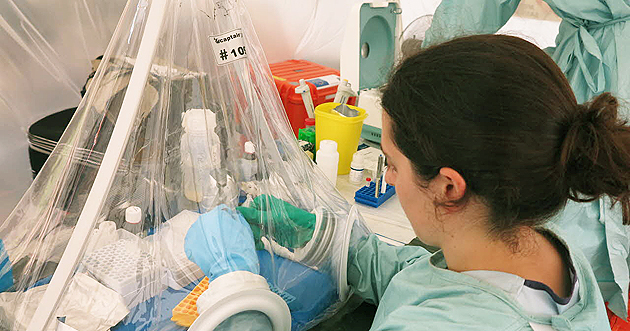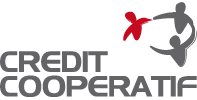

Ebola diaries: Detecting disease on an unprecedented scale
Source : OMS / WHO
In June 2014, Jim Strong and Allen Grolla, laboratory scientists from the Public Health Agency of Canada, were deployed through the Global Outbreak Alert and Response Network (GOARN) to work with WHO in Guinea and Sierra Leone. They had experience working in previous haemorrhagic fever outbreaks in Angola, Republic of Congo, Democratic Republic of Congo, and Kenya. As they began receiving and testing specimens they realized they were in the middle of something much bigger than any of the outbreaks they had seen before.

"We arrived in Conakry, Guinea in late June 2014 with a lot of lab equipment, amid an outbreak that was moving very quickly. It took several days of discussion to determine the best place to set up our lab.
When we first arrived in Conakry, we didn’t see many cases. It was believed that Ebola was mostly around Guéckedou. Most of the reports indicated that the outbreak was going to be contained because there was a reasonable response at that point. Nobody really predicted the fact that the outbreak was already widespread and that we were well behind the curve. Anxiety levels really started to escalate in late June and July, however, when it became apparent that there were many cases in Liberia and Sierra Leone. We started to see that later when we got to Guéckedou and even more in Kailahun in Sierra Leone.
We shifted first from Conakry to Guéckedou and later across the Mano River to Kailahun district in Sierra Leone, the new epicentre at the time. We travelled with about 16 boxes and cases of medical and diagnostic equipment, bouncing around on the back of trucks.
Setting up the first laboratory in Kailahun
Our trip to Kailahun started in the early morning. We went down a very bumpy road to the river crossing. The borders were not closed yet and there were still a lot of people and goods crossing, including motorbikes and huge boatloads of cassava. The WHO logistician negotiated our crossing with Customs authorities. We loaded all our kits into canoes, and off we went.
In Kailahun, the people were very friendly. They wanted to sit right next to us, hear our story and know exactly what was going on.
There was no laboratory testing at that time in Kailahun. Médecins Sans Frontières (MSF) had just set up an Ebola treatment centre on the outskirts of town and started to admit patients. We set up our laboratory right across from where medical staff exited the wards, in the low-risk zone of the treatment centre.
A much bigger outbreak than anyone had predicted
When our laboratory was set up in Kailahun, the number of positive samples was higher than any other outbreak we had been in. The MSF site was only getting a portion of the cases in the district, so we realized this was much bigger than anything else we had been involved in before. The difference was the size and how rapidly it spread geographically.
The projections and actual caseloads were going up beyond what we expected. This was quite different from previous outbreaks. Usually the outbreak is centred in one single area, a small town or village where there is a hospital setting. But this one was in multiple towns, multiple big cities, eventually including capitals, and spread very quickly.
Testing up to 40 samples a day
We ran the laboratory from around 8:00 am, when the first batch of samples came in, until about 6:00 pm. We would get a second batch in the afternoon, including swab samples, process those and get the results 2 to 3 hours later. That was sort of a standard day.
We would always be on call if ambulances came in. There was a need to test for priority cases, often healthcare workers, where results needed to be known very quickly because it had a lot of implications for the hospital. Generally, the number of samples would range from on a low day of 10 up to days where we had 35 to 40. The numbers started to go up when there was more sampling of corpses in the community. The most we did in a day was 80. Later on, we also set up another laboratory in Magbaraka in Sierra Leone, another hot area. For several months we were operating 2 laboratories, doing similar caseloads.
Challenges with staffing for a prolonged outbreak
Since this outbreak was so large, we had to use staff who had never been deployed to an outbreak before. Prior to being deployed, we provided them with the necessary training to make them comfortable and proficient with the work. You will deal with samples that are positive, so you need to be prepared and comfortable in handling that. This outbreak required that several people were deployed multiple times and the fear of the unknown in this unprecedented event made it a particular challenge.
In all, the human resource challenge was one of the most difficult to manage. The upside is we now have a strong group of people with deployment experience for this type of outbreak."






 Actualités
Actualités













